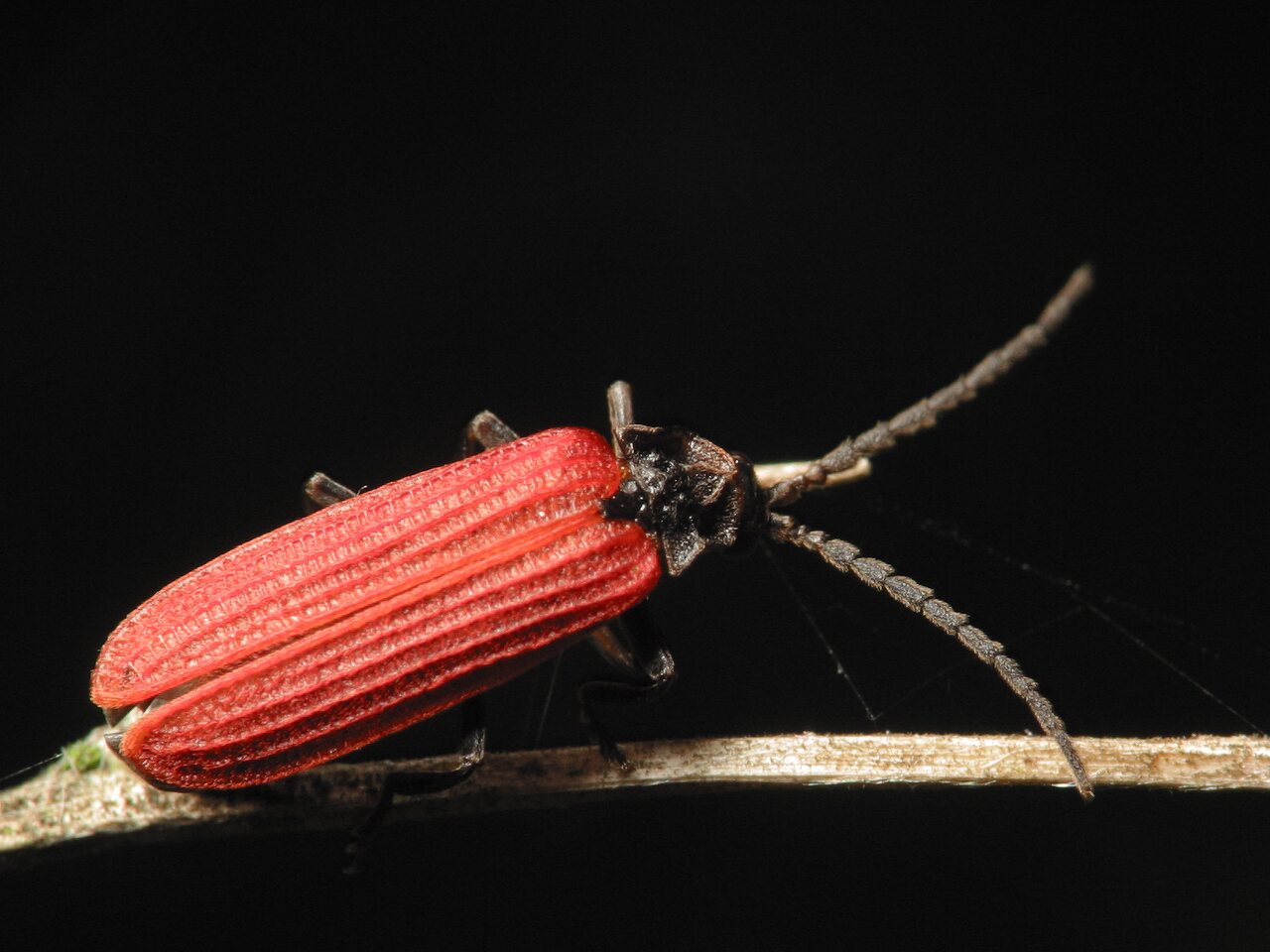
Pyropterus nigroruber · žiedvabalis
- Sortbrystet maskebille
- havupunakuoriainen
- melnkrūšu sarkanspārnis
- ogniokryw czarnoczerwony
- ukbeetles.co.uk/pyropterus-nigroruber
- en.wikipedia.org/wiki/Pyropterus_nigroruber
- gbif.org/species/4428364
This is a widespread but very local and generally rare species across Europe from Spain to Asia Minor and north to the middle of Sweden and while saproxylic species generally have suffered from habitat abuse its range may be increasing as it was discovered in Belgium for the first time in 2003 and in the Netherlands in 2016, further east it extends through Siberia and it is quoted as occurring in Japan. The typical habitat is open established and humid woodland of all kinds with plenty of decaying wood and vegetation. The short-lived adults occur from June to August when they may be seen on standing or fallen moss-covered timber or among nearby herbage, they form mating assemblages before dispersing by flight and, at least on the continent, often occur in flight-interception traps. Larvae develop among soft decaying heartwood of a range of broadleaf and coniferous trees during August and October. They are often quoted as predatory but this is probably wrong as captive bred larvae have been observed consuming water droplets among decaying oak and fir in the absence of any prey and it is thought they consume myxomycete fungi. Adults have been observed on a variety of flowers feeding on pollen during hot weather.
7.5-10.0mm. Distinctive among our fauna due to the form of the pronotum and elytra; the central pronotal cell is closed before the anterior and posterior margins and flanked by four wide and deep lateral cells, and the four longitudinal elytral costae are separated by a single row of transverse pits. Entirely black but for the brilliant red elytra. Head transverse with large convex eyes and robust filiform antennae inserted on the anterior margin, second and third antennomeres much shorter than 4-11; the second quadrate and the third transverse. Pronotum transverse and laterally constricted about the middle, roughly sculptured and finely pubescent, rounded anteriorly and with acute posterior angles. Scutellum finely punctured and pubescent, transverse and lobed apically. Elytra finely pubescence; very elongate with rounded and prominent shoulders, dilated beyond the basal quarter and separately rounded apically.
‥
0 comments
Add a comment